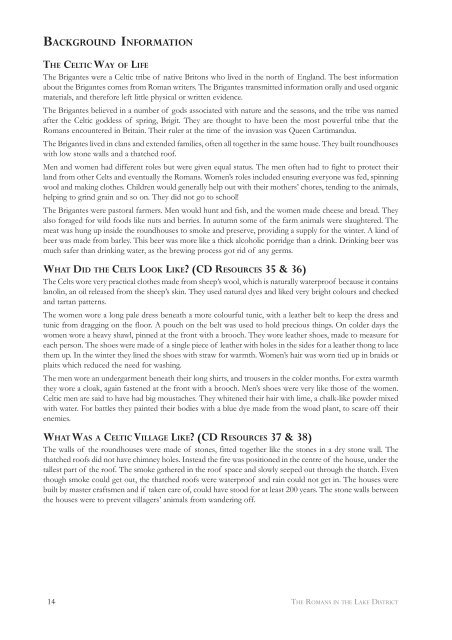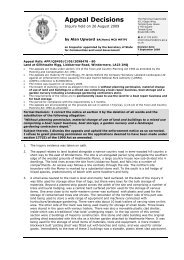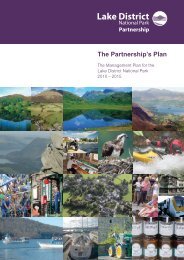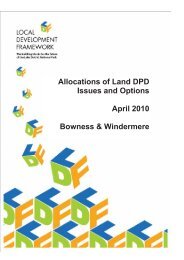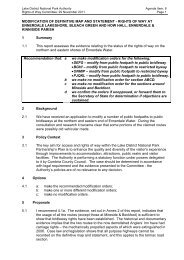Booklet pages 13 - 15 (PDF)
Booklet pages 13 - 15 (PDF)
Booklet pages 13 - 15 (PDF)
You also want an ePaper? Increase the reach of your titles
YUMPU automatically turns print PDFs into web optimized ePapers that Google loves.
BACKGROUND INFORMATION<br />
THE CELTIC WAY OF LIFE<br />
The Brigantes were a Celtic tribe of native Britons who lived in the north of England. The best information<br />
about the Brigantes comes from Roman writers. The Brigantes transmitted information orally and used organic<br />
materials, and therefore left little physical or written evidence.<br />
The Brigantes believed in a number of gods associated with nature and the seasons, and the tribe was named<br />
after the Celtic goddess of spring, Brigit. They are thought to have been the most powerful tribe that the<br />
Romans encountered in Britain. Their ruler at the time of the invasion was Queen Cartimandua.<br />
The Brigantes lived in clans and extended families, often all together in the same house. They built roundhouses<br />
with low stone walls and a thatched roof.<br />
Men and women had different roles but were given equal status. The men often had to fight to protect their<br />
land from other Celts and eventually the Romans. Women’s roles included ensuring everyone was fed, spinning<br />
wool and making clothes. Children would generally help out with their mothers’ chores, tending to the animals,<br />
helping to grind grain and so on. They did not go to school!<br />
The Brigantes were pastoral farmers. Men would hunt and fish, and the women made cheese and bread. They<br />
also foraged for wild foods like nuts and berries. In autumn some of the farm animals were slaughtered. The<br />
meat was hung up inside the roundhouses to smoke and preserve, providing a supply for the winter. A kind of<br />
beer was made from barley. This beer was more like a thick alcoholic porridge than a drink. Drinking beer was<br />
much safer than drinking water, as the brewing process got rid of any germs.<br />
WHAT DID THE CELTS LOOK LIKE? (CD RESOURCES 35 & 36)<br />
The Celts wore very practical clothes made from sheep’s wool, which is naturally waterproof because it contains<br />
lanolin, an oil released from the sheep’s skin. They used natural dyes and liked very bright colours and checked<br />
and tartan patterns.<br />
The women wore a long pale dress beneath a more colourful tunic, with a leather belt to keep the dress and<br />
tunic from dragging on the floor. A pouch on the belt was used to hold precious things. On colder days the<br />
women wore a heavy shawl, pinned at the front with a brooch. They wore leather shoes, made to measure for<br />
each person. The shoes were made of a single piece of leather with holes in the sides for a leather thong to lace<br />
them up. In the winter they lined the shoes with straw for warmth. Women’s hair was worn tied up in braids or<br />
plaits which reduced the need for washing.<br />
The men wore an undergarment beneath their long shirts, and trousers in the colder months. For extra warmth<br />
they wore a cloak, again fastened at the front with a brooch. Men’s shoes were very like those of the women.<br />
Celtic men are said to have had big moustaches. They whitened their hair with lime, a chalk-like powder mixed<br />
with water. For battles they painted their bodies with a blue dye made from the woad plant, to scare off their<br />
enemies.<br />
WHAT WAS A CELTIC VILLAGE LIKE? (CD RESOURCES 37 & 38)<br />
The walls of the roundhouses were made of stones, fitted together like the stones in a dry stone wall. The<br />
thatched roofs did not have chimney holes. Instead the fire was positioned in the centre of the house, under the<br />
tallest part of the roof. The smoke gathered in the roof space and slowly seeped out through the thatch. Even<br />
though smoke could get out, the thatched roofs were waterproof and rain could not get in. The houses were<br />
built by master craftsmen and if taken care of, could have stood for at least 200 years. The stone walls between<br />
the houses were to prevent villagers’ animals from wandering off.<br />
14 THE ROMANS IN THE LAKE DISTRICT


